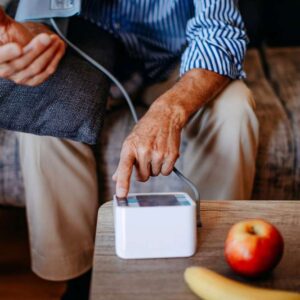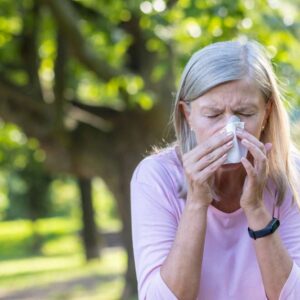
Avoid These Everyday Health Hazards
- Recycling may help the environment, but it won’t help your health!
- Find out what the government hasn’t done to protect your from these health destroyers
- Protect yourself and your loved ones with a few easy changes.
Dear Reader,
Have you ever thought about exactly what all those plastic disposable items in your life are made of?
Probably not. But you should.
And here’s the reason — some of these everyday items contain toxic chemicals ( BPA and phthalates may ring a bell) — linked to deadly disease like diabetes, obesity, and even cancer.
Who knew? For a long time, I sure didn’t.
I just cruised through my days full of single-packed food items, disposable cups, plastic shopping bags, cheap food storage containers, cans of chickpeas, and countless drinking straws — never knowing the real dangers.
In fact, the plastic waste from these items was my only concern — so I always recycled. I thought, like many, that if I did my part to keep plastic out of the environment, it was a perfectly safe for daily use.
Don’t get me wrong, I did have a hunch that plastic was probably risky just by its synthetic stench, but at the time, I wasn’t well informed about the health dangers.
But as research shows, my hunch was right.
BPA, a chemical component of plastic, is a long-suspected health culprit. Yet BPA isn’t the only hazard leaking out of your plastic convenience items.
And, to make things worse, even BPA-free plastics are just as dangerous — we will get to that later.
The good news is there is a surefire way to prevent exposure to these chemicals, which I will explain in a bit.
First, let’s find out what these vitality-crushing chemicals are up to in your body.
![]() Scary Synthetics
Scary Synthetics
Plastics consist of several synthetic chemicals — the worst two are bisphenol A (BPA) and phthalates.
Over the past few decades, BPA has been linked to negative health effects like diabetes, cancer, obesity, and reproductive issues.1
BPA ruins your health because it acts as an endocrine disrupter in your body by producing estrogenic activity. This means BPA signals the body’s hormones incorrectly and can interfere with metabolism, fertility, and the immune system1.
BPA is often part of the manufacturing process for plastics and resins, including the manufacturing of coated cans, bottles, and other types of food packaging —the items of everyday life.
In 2012, the FDA reluctantly passed a regulation banning BPA from being usedo baby bottles, sippy cups, and infant formula packaging.
The FDA claims this this action was only due to the urging of the chemical industry’s chief trade association, the American Chemistry Council, and not due to safety issues with this product.2,3
In fact, the FDA’s deputy commissioner for foods, Michael Taylor, reported the decision “simply codified what the industry was already doing based on the preference of consumers and did not reflect concerns about the safety of BPA in baby bottles or toddler’s cups.” Taylor went to say, based on evidence, “We continue to support its safe use in other materials.”3
If the government feels it needs to protect children from BPA, why would it leave out the rest of the population? Why would the FDA allow this chemical to be in any product?
Especially food storage and serving items.
But the bad news just gets worse…
Meet BPA’s equally terrifying counterpart, phthalates.
Phthalates are chemicals used as plasticizers (chemicals that make compounds softer and more flexible) in many household products, including cosmetics, detergents, carpets, pesticides, shower curtains, furniture materials, and car interior parts — this stuff is everywhere.
And of course, phthalates can be found in our food and water sources — either by way of processing (think plastic tubing used in milk processing) or through contacts with disposable food and beverage containers.
Like BPA, phthalates are also endocrine disruptors shown to interfere with reproductive and metabolic functions. Diabetes, lower levels of testosterone, and obesity are all potential hazards of exposures.4,5
But here’s the truly alarming part– phthalates are so common that 95 percent of Americans have detectable phthalate levels in their urine.6
In 2009, the Consumer Product Safety Commission banned the use of phthalates in children’s toys, but once again, the FDA took no action against this toxic swill in other common plastic products or cosmetics.7
However, they did issue a guidance on limiting the use of specific phthalates, dibutyl phthalate (DBP) and di(2-ethylhexyl) phthalate (DEHP), in the pharmaceutical industry.
To be clear, this is not a ban of these two phthalates in pharmaceuticals, but rather a suggestion that companies should stop using them in drug products. 8
![]() Ditch the Danger
Ditch the Danger
Obviously, you can’t depend on the government to protect your health from these hazards, so here is one solid way to prevent exposure:
Avoid them.
Here’s a few easy tips to get you started:
- Ditch all of your cheap plastic food storageware and invest in glass or stainless products
- Carry your own cotton grocery bags
- If you have to purchase plastic, choose items that are listed as BPA and phthalate free on the packaging or look for the plastic codes on items —recycling codes 1, 2, and 5 indicate plastics manufactured without BPA or phthalates
- Look for BPA-free can foods. There is a list of reliable brands here.
And one final warning — never heat foods or beverages in plastic containers — even plastics manufactured without BPA or phthalates.
A study published in Environmental Health Perspectives found that when exposed to heat:
Almost all commercially available plastic products we sampled — independent of the type of resin, product, or retail source — leached chemicals having reliably detectable estrogenic activity, including those advertised as BPA free. In some cases, BPA-free products released chemicals having more estrogenic activity than did BPA-containing products. 9
While these practices may make your life a bit less convenient, they may help you maintain your health.
Live well,

Natalie Moore
Managing editor, Living Well Daily
Ed. Note: Please send your feedback: nmoore@lfb.org – and click here to like us on Facebook.
Sources
[1] Endocrine disruptors and reproductive health: the case of bisphenol-A.
[3] F.D.A. Makes It Official: BPA Can’t Be Used in Baby Bottles and Cups
[6] Study finds moms share phthalates with their babies.
[7] United States Environmental Protection Agency
[8] Legislators Call for FDA to Further Restrict Use of Phthalates in Medicines, Citing Risks
[9] Most Plastic Products Release Estrogenic Chemicals: A Potential Health Problem That Can Be Solved
Written By Natalie Moore
Natalie Moore is a dedicated health researcher with a passion for finding healthy, natural, and science-based solutions. After a decade of direct healthcare experience in western and natural medicine, she was involved in public health research before joining Living Well Daily.
View More Free Articles
Can't Shake Negative Thoughts? Check Your GUT First
Everyone struggles sometimes to stay positive or see the bright side of things. It’s part of being human. You might think those negative thoughts start in your brain—but it’s more complicated than that. A simple change to your daily habit can help dial down those negative feelings. New research suggests that this simple strategy could...
Repair Your Gut Barrier With the “Sunshine Cure”
Happy Fourth of July! As you celebrate with sunshine, good food, and great company, don’t forget—those summer rays aren’t just lifting your spirits… they’re also working behind the scenes to protect your gut and boost your health. Your gut health is more important than most people realize. It directly affects your overall well-being—from immunity to...
The 5 Health Numbers Your Doctor Wishes You'd Track
Have you ever been told you should “advocate” for yourself when it comes to your healthcare and wondered what that really means? It’s not just a buzzword—it’s a powerful concept that empowers you to take charge of your own health journey. In fact, it could save your life. Being your own best health advocate starts...
Do THIS Every 20 Minutes to STOP Digital Eye Strain
Our eyes are under assault—they are the true victims of our current digital age. And it’s because we are constantly glued to screens… phones, tablets, computers, TVs—you name it. Unfortunately, that screen time is taking a serious toll. Digital eye strain affects millions worldwide. In fact, up to 50 percent of computer users could develop...
Mailbag: The Calcium Mistake That's Hardening Your Arteries
“What type of calcium is best to take with bisphosphonates for osteoporosis? I know some varieties can build up in arteries. Thanks for the help.” —Bone Builder Hi Builder, When a patient asks me about calcium, I ask them a peculiar question in return… “Ever wonder how elephants and giraffes build and maintain their massive...
Doctor-Approved Method to Ditch Blood Pressure Meds
In a world where drug solutions dominate healthcare, it’s refreshing to discover that best remedies sometimes don’t involve a single pill. A groundbreaking study shows simple relaxation techniques could be your secret weapon against one of America’s deadliest health conditions. Best of all? It’s free, easy to start right away—and your results are bound to...
Trouble Hearing? Your Heart Could Be at Risk
With research exploding and data pouring in, scientists are uncovering some weird (and surprisingly helpful) health connections. Today’s odd couple? Hearing loss and heart failure. Turns out your ears and your ticker are more connected than you ever imagined. A major study published in the journal Heart looked at over 164,000 people for nearly a...
Stay Up Late? It Could Destroy Your Mental Health
If you dread mornings but come alive at night, there’s concerning new research you need to know about. A recent study found that “night owls” are at higher risk for depression. But before you rush to set your alarm to get up with the sun tomorrow, there’s more to the story… Chronotypes are essentially your...
Go from Flabby to Fit with this Common Vitamin
If you’re like many of us, you woke up one day, looked in the mirror, and realized you’re no spring chicken anymore. Even worse—when you weren’t paying attention—it seems you somehow misplaced the muscles of your youth and have gone from fit to flabby. Aging has a way of humbling us like that. But scientists...
Seasonal Allergy “Off Switch” Discovered in the GUT
“Doc, why am I suddenly suffering from seasonal allergies when I’ve never had them before?” It’s a question I get all the time—and my answer might surprise you. Stop looking up at the trees—and start looking down at your gut… Your sneezing fits, itchy eyes, and runny nose might have more to do with what’s...









